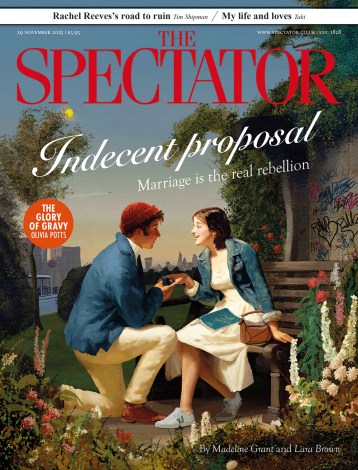
There is a slightly odd but pleasingly old-fashioned feel to the design for the dustjacket of this book, with its early London Underground style of lettering and a painting of the Coliseum at night, as viewed from Trafalgar Square, in 1905 — some decades before the building became home to English National Opera.
There is a slightly odd but pleasingly old-fashioned feel to the design for the dustjacket of this book, with its early London Underground style of lettering and a painting of the Coliseum at night, as viewed from Trafalgar Square, in 1905 — some decades before the building became home to English National Opera.
This is a substantial volume and it deals with its subject matter in considerable detail. The history of English National Opera is a long and complex one and Susie Gilbert has been assiduous in her research, helped by generous access to the company’s archives and, clearly invaluable, the long memory and informed opinions of Rodney Milnes, opera critic of this magazine from 1970-1990. She has conducted numerous interviews and ploughed her way through correspondence, press cuttings and minutes of board meetings. Every source is scrupulously noted, there is a comprehensive index and a useful list of all operas staged from 1931 to the present day.
It is undeniable that the early days of the company make for the most interesting reading, with my great heroine Lilian Baylis firmly at the centre of the story. Lilian Baylis was a phenomenon, with her obstinacy, her strongly held religious beliefs, her fierce devotion to the artists who worked for her, her rather unlikely passion for opera and theatre and her conviction that both pleasures should be available to everyone. Anyone working for ENO should be given a copy of her speech for radio with its clarion call conclusion:
All art is a bond between rich and poor; it allows of no class distinctions . . . . It is a crying need of working men and women who need to see beyond the four walls of their offices, workshops and homes into a world of awe and wonder.
Following the fortunes of the company that was to become English National Opera, from its first stirrings at the Old Vic, its life on the road during the war, the years at Sadler’s Wells, its flirtations with setting up next to the National Theatre on the South Bank and finally to its current base at the London Coliseum, it is fascinating to see how certain themes crop up over and again: the search for a suitable home for the opera company; the constant attempt to strike a balance between artistic excellence and making the operatic experience as accessible and reasonably priced as possible; the efforts to nurture home-grown talent; the determination, above all, to communicate with the audience in its own language.
In the 1930s and ’40s, Edward J. Dent was making the translations of opera texts which, in their simplicity, directness and freshness of language, were to become the backbone of the company’s performing repertory. Along with director Tyrone Guthrie he was determined to develop a style in which music and theatre were balanced. The two men also identified the ‘special relationship’ that the company had with its audience, ‘animated by ideals which were not solely aesthetic but also partly social and humanitarian’, with an ‘affectionate and vital relation between stage and audience’. This is inspiring stuff that still holds good today.
Gilbert traces all the ups and downs of a growing opera company, the artistic spats, the strikes for more pay, the triumphs, the disasters, but as she reaches more recent events she has clearly become subject to the deadening muzzle of threatened legal action. This has a horribly stultifying effect on the narrative, as people are referred to as having simply ‘left the company’ rather than being fired, and one is forced to probe very deeply between the lines to extract any real sense of the tensions underlying the frequent shifts in power over the past 20 years.
I worked at ENO during the regime of the Mark Elder/David Pountney/Peter Jonas triumvirate and found that the account of that period, though fair, didn’t manage to conjure up the sheer thrill of it all, nor — as baritone John Rawnsley, original interpreter of the role of Rigoletto as put-upon, resentful Mafioso sidekick in Jonathan Miller’s famous and endlessly revived production, put it recently — what a ‘fantastically good time we had’. Of course that wasn’t the case all of the time, but frequently, thrillingly, it was, for both audiences and performers.
Susie Gilbert has produced a cogent and extraordinarily useful work of reference; what is missing from her account is a sense of the adrenaline-fuelled excitement that comes with putting on a show. Where are the comments from singers, from the musicians in the orchestra pit, the ones actually responsible for delivering the combustible mix of music and drama that explodes into opera?
Oh and it has, on the whole been extremely well copy-edited but there is one blissful misprint where the unexpected demise of artistic director Stephen Arlen in 1972 is attributed to ‘cancer of the sarcophagus’.





Comments